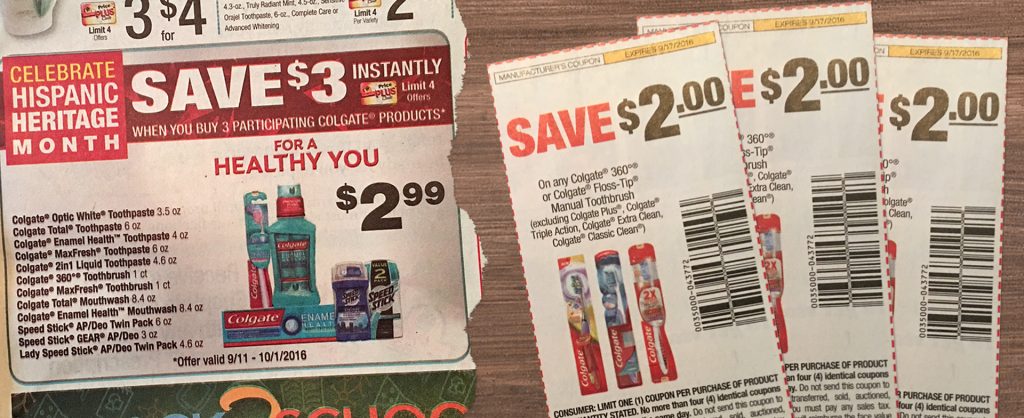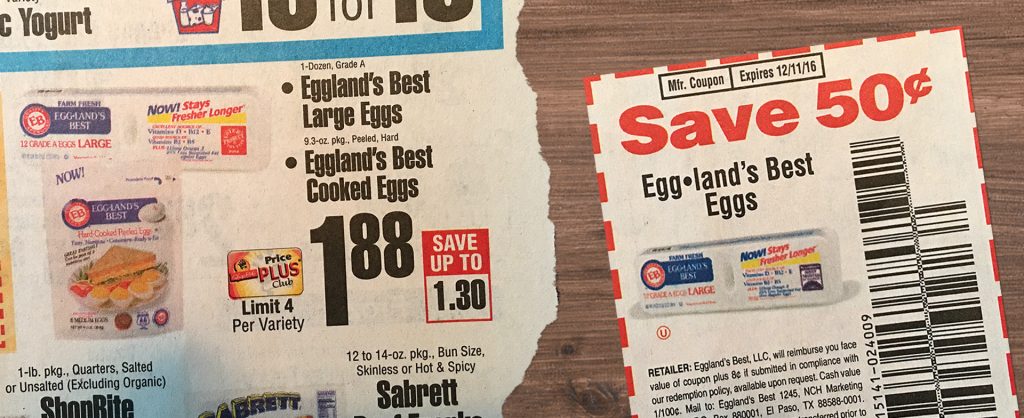Beginner’s Guide to Couponing | Part 1
Beginner’s Guide to Couponing | Part 1
This is Part 1 in a three-part series. This post may contain affiliate links.
Couponing is not what it used to be. Gone are the days of scoring at least half of what’s in your shopping cart for free.
Okay, so that’s probably not the best way to start off a guide about couponing. But, it’s true. The couponing landscape has shifted, and things are different. For the average couponer, I think that’s a good thing. Couponing is still 100% worth the time and effort you will put into it.
When I was paying off my $74,000 of consumer debt and was looking for a way to cut back my spending, I turned to my grocery bill. I had already slashed my utilities and other fixed expenses and felt there was nowhere else to trim.
After some research, I encountered the book, The Coupon Mom’s Guide to Cutting Your Grocery Bills in Half, and in turn, the world of coupons. Through couponing, I have been able to go from spending over $600+/month, for my family of four, to $250-$300.
I learned how to coupon during the time couponing was gaining mainstream popularity. The concept of (and show) Extreme Couponing emerged and got a lot of attention. Unfortunately, the onslaught of shoppers who cleared shelves and bought in quantities that were inconsumable altered the manufacturers’ approach to couponing and kind of gave couponing a negative image.
Fortunately, couponing feels less crazy and harried now than it did a few years ago, and the goal for couponers — at least for this one — has evolved from getting as much free stuff as possible to simply incorporating coupon usage as a frugal and money-saving strategy.
I believe couponing is still a valid and worthwhile method of saving at the grocery store.
Knowing where to start can be daunting — enough to make you not start. I encourage you to give couponing a try. You’ll see that with some time and effort on your part, you’ll be able to save on your grocery budget and make a lasting impact on your overall budget.
Over the course of three posts, I will introduce you to the wonderful and not-so-crazy-anymore world of couponing.
Couponing Philosophy
Before jumping into the nitty gritty of how couponing works, it’s important that you grasp the philosophy and main ideas behind couponing.
Main Idea
Buy items only when they are at their lowest prices and combine with coupons and store promotions to achieve rock bottom prices. Buying only at this time and stocking up guarantees you are paying the lowest prices for the things you need.
Know Your Prices
To achieve above, you need to get a good idea of the price fluctuations of the items you always buy. Most items are on a sales cycle anywhere from six to twelve weeks. And just because something is advertised as “On Sale!” doesn’t mean that sale price is the best price.
Watch and record the prices for at least six weeks to discover the actual lowest price. You will see how often sales repeat. Do this mentally, with a small notebook, or start a memo on your phone.
You can “watch” the prices by looking in your store’s weekly circular, going to the store, or checking out the prices on your store’s app. Start with the ten or so items that have the biggest impact on your budget. After you’ve learned the prices of these ten times, watch the prices of another ten.
The Magic of Doubling
One AMAZING thing about couponing is that many grocery stores double coupons that have a face value of $.99 or less. So that $.30 coupon that seems useless is actually worth $.60. A $.50 coupon is worth $1.00, and a $.75 coupon is worth a full $1.50!
Change the Way You Shop
Instead of buying what you need when you need it, you are strategically buying the products you use when you can get them at their lowest prices.
Be Flexible to Brands and Products
Give other brands a try when you can score them at a significantly lower price than you normally pay for your preferred brands. Consider trying a new product altogether if it can serve as a substitute for a product you usually buy.
Stockpile, Stockpile, Stockpile!
Stockpiling is a fundamental concept in couponing (but not in the obnoxious, shelf-clearing way). When your items are at their lowest prices, and you have coupons for them, buy as many as your budget, space, and coupons will allow — essentially enough to last you until the lowest price cycles back again.
How It Works
To show how couponing works, let’s look at a few things that are on sale at my market this week.
Example #1
Currently, Colgate toothpaste is on sale at my supermarket for $2.99 with an instant discount of $3.00 when I buy three, bringing the price down to $1.99 per tube.
Now, before couponing, I would have NEVER bought toothpaste at the grocery store. Typically, buying cosmetics and household items at places like Target and Wal-Mart will cost you less — that is, when looking at full prices. Throw your grocery store’s promotions as well as coupons in the mix, and things change.
There is a newspaper coupon available for $2.00 off one tube of toothpaste. By using three coupons, I will get all three tubes of toothpaste for FREE! Sweet!

Sale Price of $1.99/tube – $2.00 coupon = Free!
3 Coupons = 3 Free Tubes of Toothpaste
Example #2
Let’s do that again! The same Colgate promotion applies to toothbrushes.

Sale Price of $1.99/toothbrush – $2.00 coupon = Free!
3 Coupons = 3 Free Toothbrushes
Example #3
Let’s actually spend some money (a little, anyway) on this one. Eggland’s Best Eggs are on sale for $1.88. There is a newspaper coupon available for $.50 off one carton of eggs. Because my store doubles (remember doubling?), that $.50 coupon is really worth a dollar, which takes the eggs down to $.88!

Sale Price of $1.88/dozen – $.50 coupon ($1.00 when doubled) = $.88
So, when you add everything up, this week I can score the following items
- 3 Tubes of Toothpaste
- 3 Toothbrushes
- 1 Dozen Eggs
…for a grand total of $.88!!! Pretty cool, huh?
Here’s the formula:
Lowest Price of Item – Coupon Value = Rock Bottom Price
Rock Bottom Price x Quantity = HUGE SAVINGS
That’s how couponing works in a nutshell. You buy something at the lowest price you can, combine it with a coupon, and buy in quantity. That’s it!
Getting Started
Now you know the basis for how couponing works. There are a few things you want to make sure are in place before diving in.
- Make sure you have your store’s discount card, as most stores require it for certain sale prices.
- Get your store’s circular mailed to you, if you’re able to. Or identify how you’ll get it each week before you shop.
- Be sure you know the start and end days of your store’s sales. Some stores are Sunday through Saturday. Others are Friday through Thursday.
- Download your store’s app to your phone to take advantage of digital coupons.
Get to Know Your Store’s Policies
You want to familiarize yourself with the coupon policy of the store you frequent the most. Find out the answers to the following questions by getting a hold of your store’s written policy or by asking at customer service.
- Do they double manufacturers’ coupons? If so, up to how much?
- Do they accept printed internet coupons?
- Do they accept “FREE” and “BOGO FREE” coupons from the internet?
- How many identical coupons do they accept?
- How many identical coupons do they double?
- Do they accept electronic coupons? If so, can they be combined with other coupons?
- Do they offer store coupons? If so, can they be combined with manufacturer coupons?
- Do they price match competitors’ advertised prices?
- Do they accept competitors’ coupons?
- Do they offer a price guarantee?
- Do they have a store rewards program?
- Do they have triple coupon promotions? (Or double, if your store does not usually double.)
- If I forget to use a coupon, may I bring it in at a later date?
Equipping yourself with this information BEFORE you begin will make you a confident couponer.
Now that you’ve received an introduction to couponing, in Part 2 we will cover the various types of coupons, where to get them, and how to get and stay organized.



0 Comments